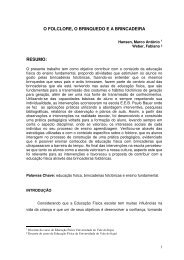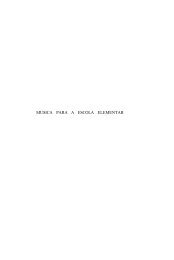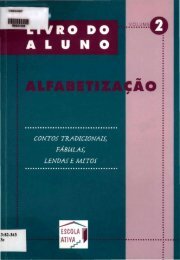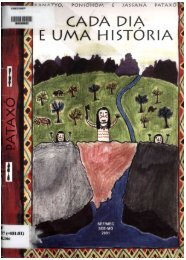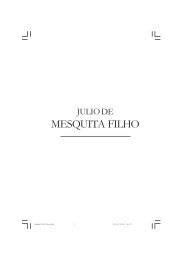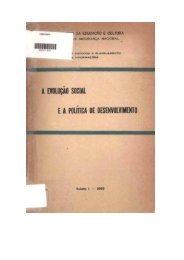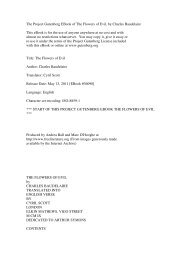A History of English Literature
A History of English Literature
A History of English Literature
Create successful ePaper yourself
Turn your PDF publications into a flip-book with our unique Google optimized e-Paper software.
The particular external direction <strong>of</strong> Ruskin's work in Art was given, as<br />
usual, more or less by accident. His own practice in water-color drawing<br />
led him as a mere youth to a devoted admiration for the landscape paintings<br />
<strong>of</strong> the contemporary artist J.M.W. Turner. Turner, a romantic revolutionist<br />
against the eighteenth century theory <strong>of</strong> the grand style, was then little<br />
appreciated; and when Ruskin left the University he began, with<br />
characteristic enthusiasm, an article on 'Modern Painters,' designed to<br />
demonstrate Turner's superiority to all possible rivals. Even the first<br />
part <strong>of</strong> this work expanded itself into a volume, published in 1843, when<br />
Ruskin was only twenty-four; and at intervals during the next seventeen<br />
years he issued four additional volumes, the result <strong>of</strong> prolonged study both<br />
<strong>of</strong> Nature and <strong>of</strong> almost all the great paintings in Europe. The completed<br />
book is a discursive treatise, the various volumes necessarily written from<br />
more or less different view-points, on many <strong>of</strong> the main aspects, general<br />
and technical, <strong>of</strong> all art, literary as well as pictorial. For Ruskin held,<br />
and brilliantly demonstrated, that the underlying principles <strong>of</strong> all the<br />
Fine Arts are identical, and 'Modern Painters' contains some <strong>of</strong> the most<br />
famous and suggestive passages <strong>of</strong> general literary criticism ever written,<br />
for example those on The Pathetic Fallacy and The Grand Style. Still<br />
further, to Ruskin morality and religion are inseparable from Art, so that<br />
he deals searchingly, if incidentally, with those subjects as well. Among<br />
his fundamental principles are the ideas that a beneficent God has created<br />
the world and its beauty directly for man's use and pleasure; that all true<br />
art and all true life are service <strong>of</strong> God and should be filled with a spirit<br />
<strong>of</strong> reverence; that art should reveal truth; and that really great and good<br />
art can spring only from noble natures and a sound national life. The style<br />
<strong>of</strong> the book is as notable as the substance. It is eloquent with Ruskin's<br />
enthusiastic admiration for Beauty and with his magnificent romantic<br />
rhetoric (largely the result, according to his own testimony, <strong>of</strong> his<br />
mother's exacting drill in the Bible), which here and elsewhere make him<br />
one <strong>of</strong> the greatest <strong>of</strong> all masters <strong>of</strong> gorgeous description and <strong>of</strong> fervid<br />
exhortation. The book displays fully, too, another <strong>of</strong> his chief traits, an<br />
intolerant dogmatism, violently contemptuous <strong>of</strong> any judgments but his own.<br />
On the religious side, especially, Ruskin's Protestantism is narrow, and<br />
even bigoted, but it s<strong>of</strong>tens as the book proceeds (and decidedly more in<br />
his later years). With all its faults, 'Modern Painters' is probably the<br />
greatest book ever written on Art and is an immense storehouse, <strong>of</strong> noble<br />
material, and suggestion.<br />
In the intervals <strong>of</strong> this work Ruskin published others less comprehensive,<br />
two <strong>of</strong> which are <strong>of</strong> the first importance. 'The Seven Lamps <strong>of</strong> Architecture'<br />
argues that great art, as the supreme expression <strong>of</strong> life, is the result <strong>of</strong><br />
seven moral and religious principles, Sacrifice, Truth, Power, and the<br />
like. 'The Stones <strong>of</strong> Venice' is an, impassioned exposition <strong>of</strong> the beauty <strong>of</strong><br />
Venetian Gothic architecture, and here as always Ruskin expresses his<br />
vehement preference for the Gothic art <strong>of</strong> the Middle Ages as contrasted<br />
with the less original and as it seems to him less sincere style <strong>of</strong> the<br />
Renaissance.<br />
The publication <strong>of</strong> the last volume <strong>of</strong> 'Modern Painters' in 1860 roughly<br />
marks the end <strong>of</strong> Ruskin's first period. Several influences had by this time<br />
begun to sadden him. More than ten years before, with his usual filial<br />
meekness, he had obeyed his parents in marrying a lady who proved<br />
uncongenial and who after a few years was divorced from him. Meanwhile<br />
acquaintance with Carlyle had combined with experience to convince him <strong>of</strong><br />
the comparative ineffectualness <strong>of</strong> mere art-criticism as a social and<br />
religious force. He had come to feel with increasing indignation that the<br />
modern industrial system, the materialistic political economy founded on<br />
it, and the whole modern organization <strong>of</strong> society reduce the mass <strong>of</strong> men to





